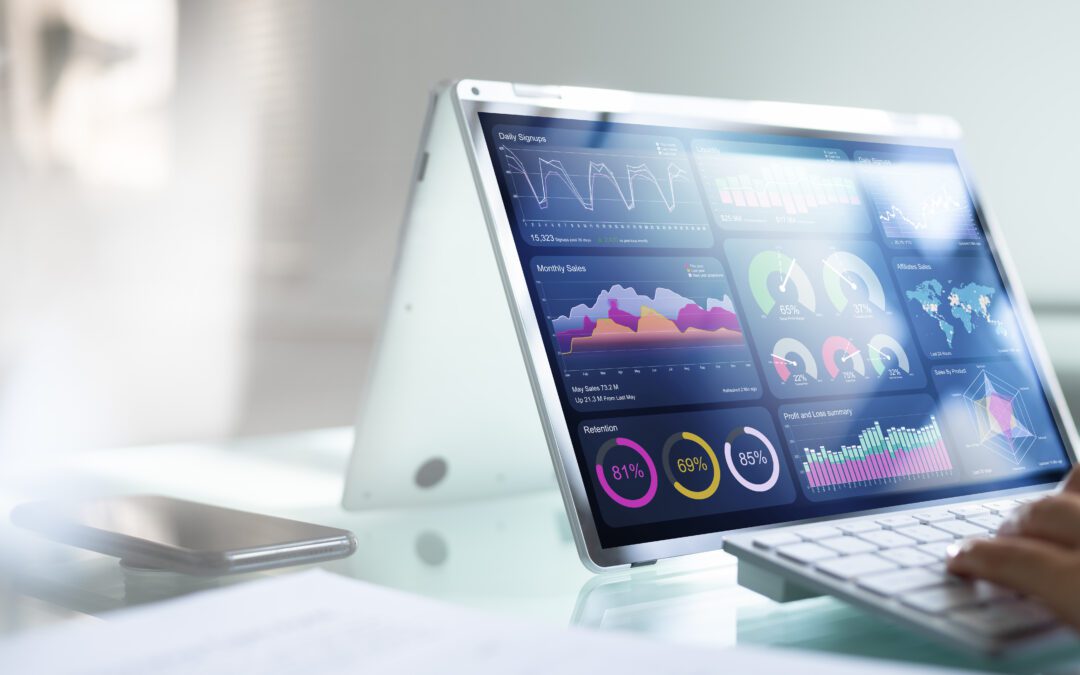Large dashboards required for overviews of a full manufacturing process include visual assets such as data cards, tables and graphs. Their main purpose is to help to achieve KPIs more easily by visualising them on screen, breaking down analytics and data in order to take actions where required.
A high-level dashboard designed for an overview of a full team and facility can include information of day-to-day processes such as employee performance, operating conditions, health and safety issues, product quality and output efficiency.
On the more literal side of production, we can design dashboards that show plans of lines and machinery on a dashboard. This displays performance issues, bottlenecks, availability of machinery (or rooms in the case of pharmaceutical manufacturing, for example) and completed outputs. This visualisation of the physical process is useful in measuring efficiency as well as spotting any anomalies early.
Further on the element of efficiency is the option to measure equipment effectiveness with live measurements of quality and performance across multiple machines. Alongside the option to measure outputs on an hourly, daily and weekly basis, productivity can be maximised and amendments made along lines where necessary.
Key benefits include:
- The ability to report on incidents within the facility
- Monitoring conditions and highlighting where changes are needed
- Overview of employee performance
- Monitoring specific lines individually
- Multiple dashboards within one main one
- Full view of machinery and production lines to identify issues
- Availability of machinery or rooms within a facility
- Inventory of products output
- Measuring productivity and effectiveness with live data
- Production goals can be reported in any timeframe
For further information on HMI and Dashboard Design take a look here. You can also get in touch with us for more details about how HMI can help your productivity and facility.
